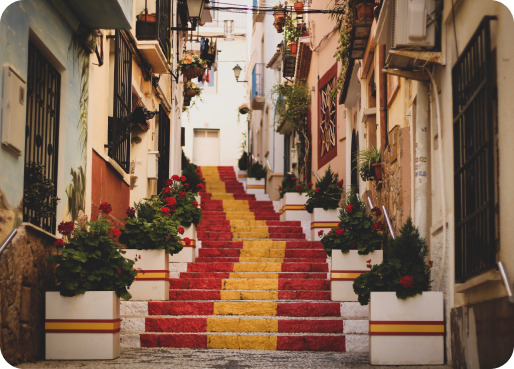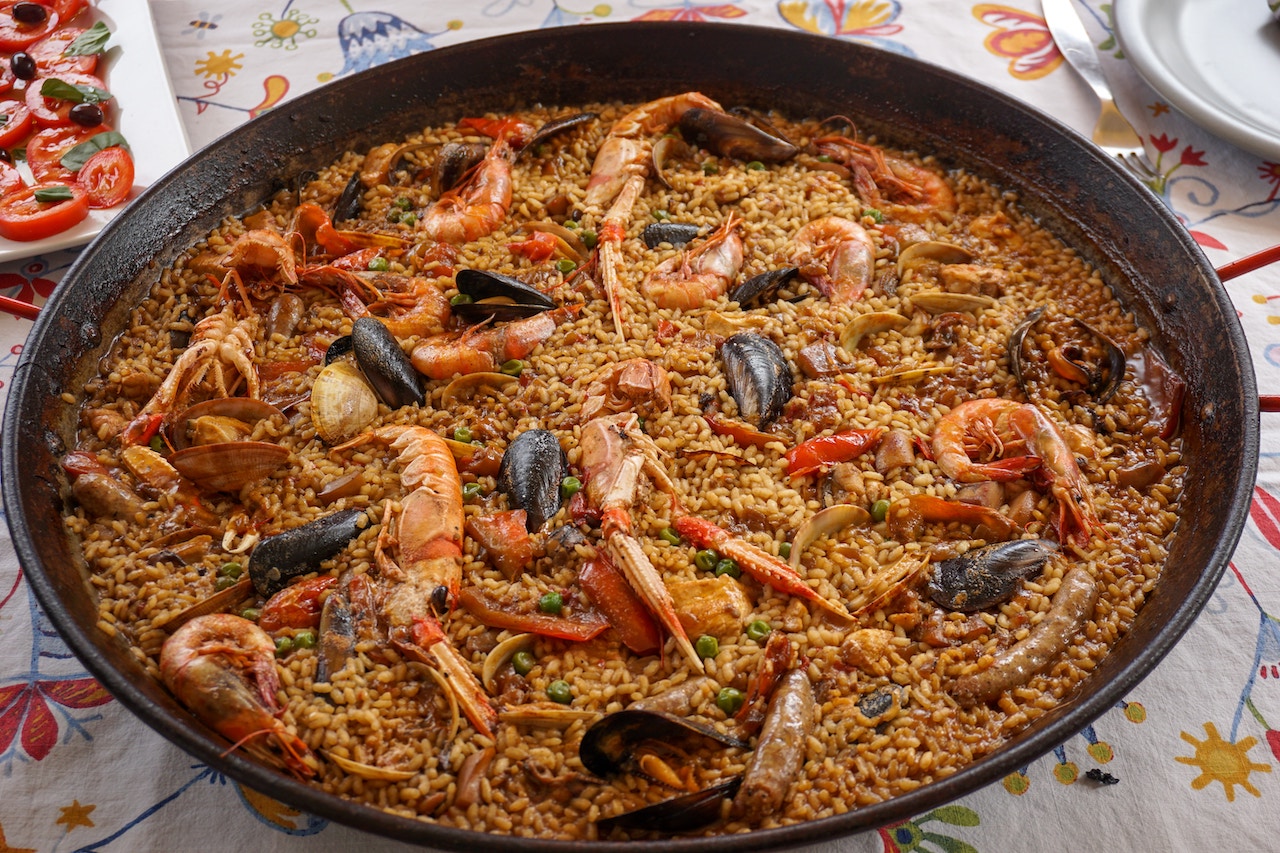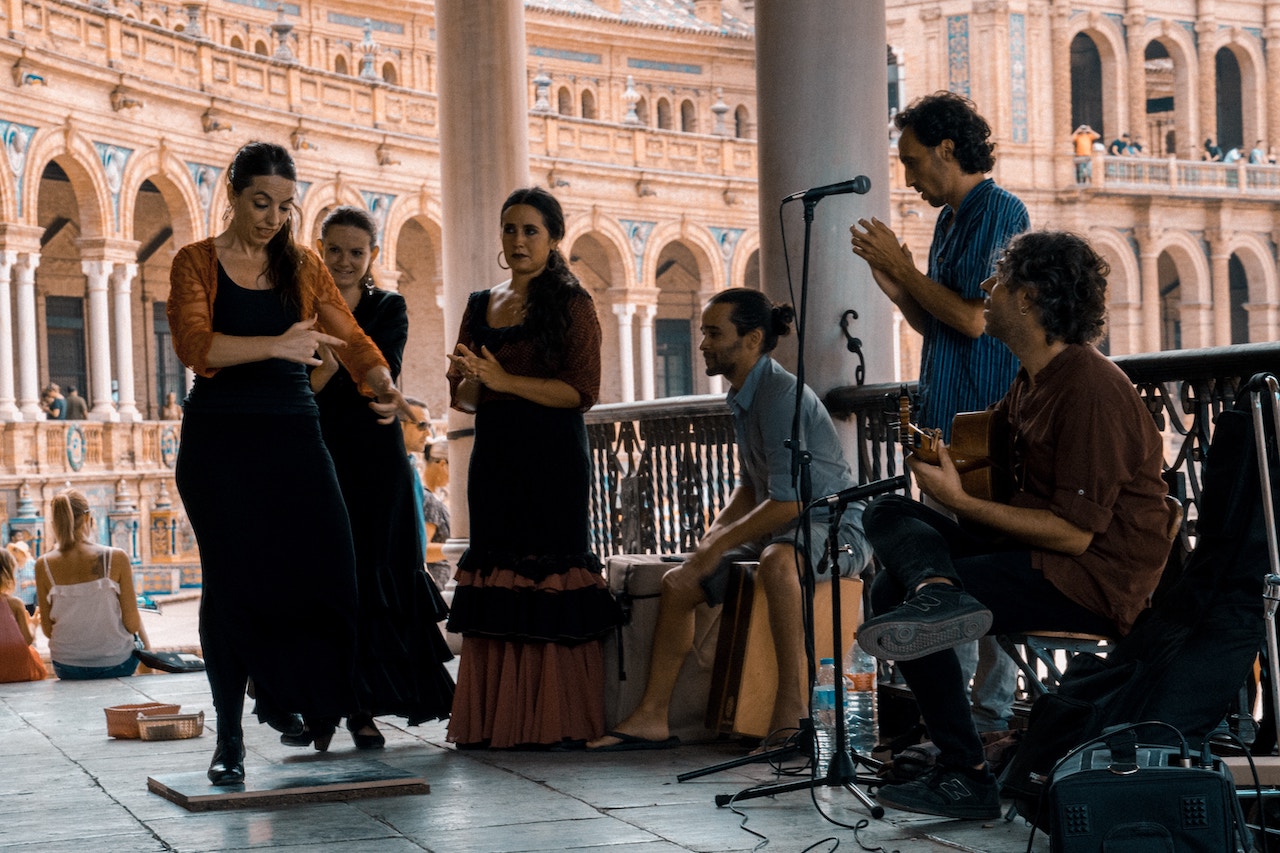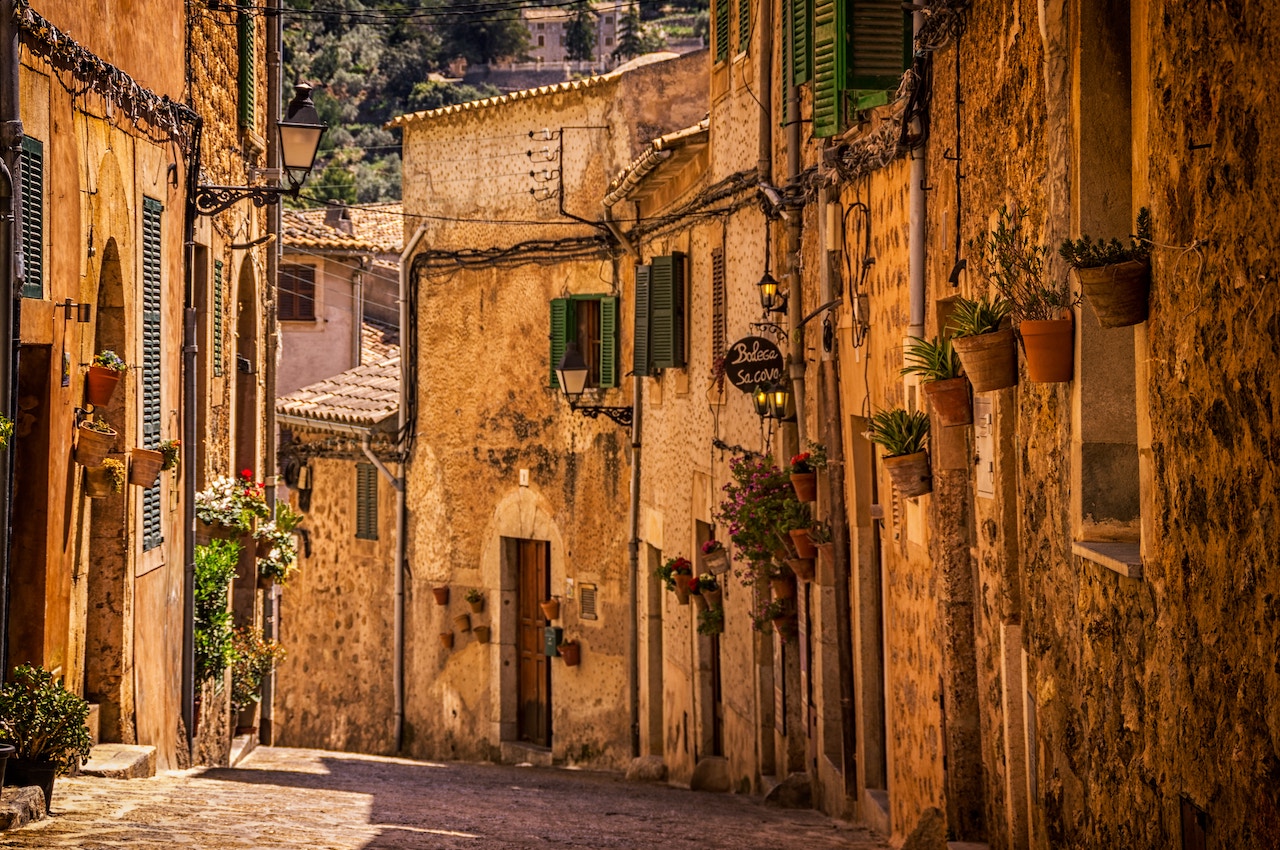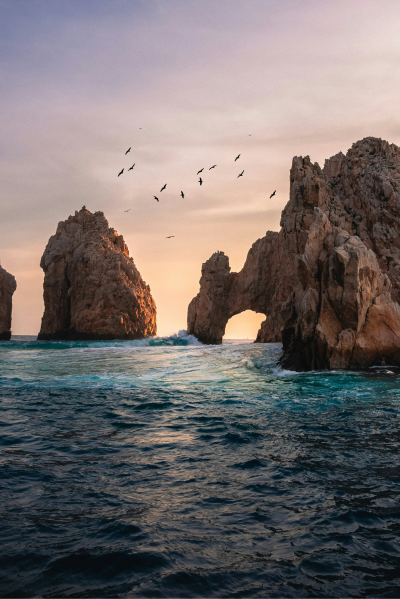Why choose Spain?
Spain’s rich history is reflected in the stunning architecture, from the Moorish palaces of Andalusia to the modernist landmarks of Barcelona.
The country’s diverse landscapes range from the sun-soaked beaches of the Costa del Sol to the tall mountains of the Pyrenees, catering to a variety of interests, whether it’s relaxation or adventure.
Spanish cuisine, famous for tapas (small snacks), paella (rice dishes), and world-class wines, provides a culinary journey in itself. Spain is also known for fun festivals like tomato fights and bull runs, which are unique and exciting.
With so much to see, eat, and do, Spain is a perfect choice for a memorable holiday.

